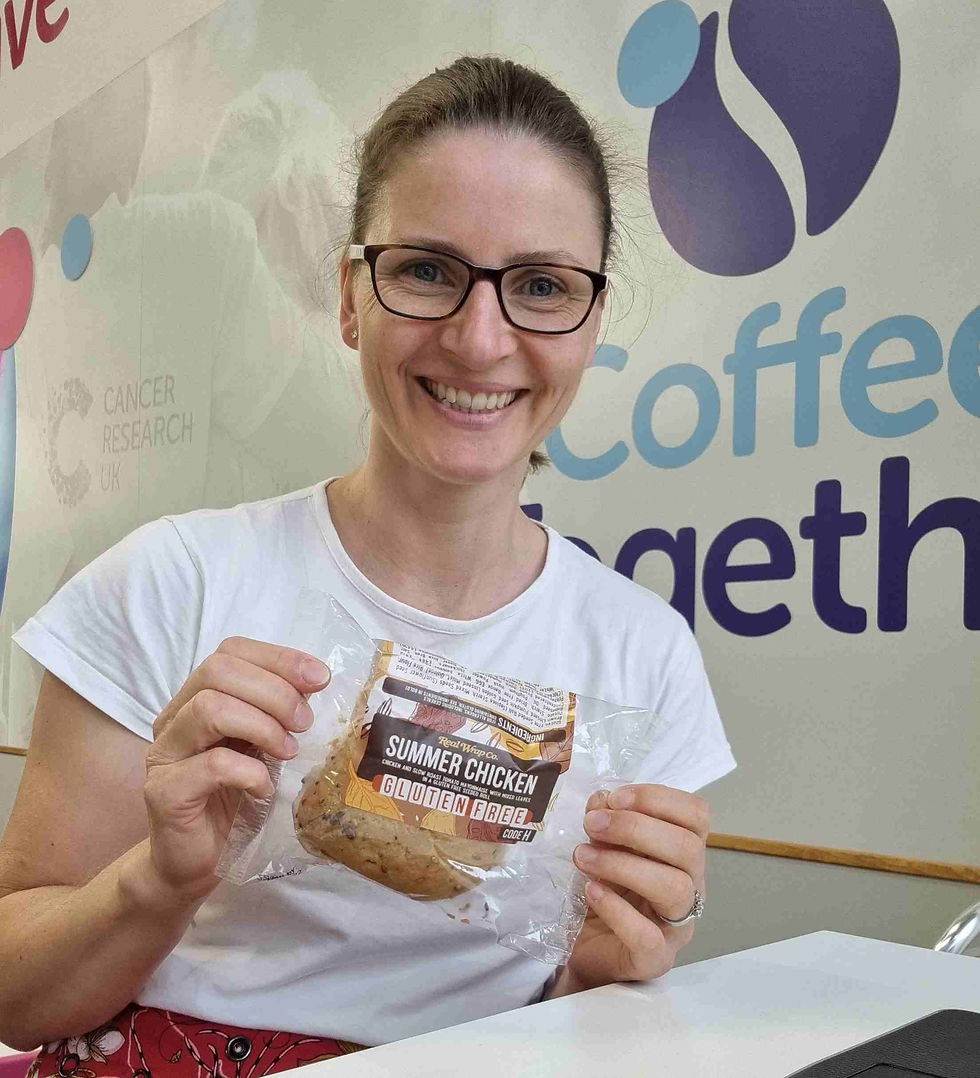How to avoid cross-contact with gluten: a comprehensive guide
- Jul 19, 2024
- 4 min read
When you’re avoiding gluten, the last thing you need is for all your hard work to be ruined by someone cross-contaminating from a shared fryer or toaster.
I know. I’ve been there.

Having had coeliac disease for over 25 years now, there are several times I’ve been glutened thanks to dodgy washing up, ignorant restaurant staff or an uncleaned grill.
And each time I’ve thought the same thing: if I knew I was going to be glutened, I’d have enjoyed something with gluten in, not had a few crumbs hanging off what would otherwise have been a gluten-free meal.
For those with coeliac disease or gluten sensitivity, avoiding gluten is essential to maintaining health and well-being. Even the smallest amount of gluten can trigger symptoms and cause significant health issues. Therefore, understanding how to prevent cross-contact with gluten is crucial (cafes and restaurants especially).
So here are some practical tips and strategies to ensure your environment is as gluten-free as possible.
Understanding Cross-Contact
Cross-contact occurs when gluten-free food comes into contact with gluten, making it unsafe for those who cannot tolerate gluten. You might also refer to it as cross-contamination, but some people prefer the term “cross-contact” so it’s not mistaken for transfering bacteria or viruses.
Tips for Avoiding Cross-Contact
Dedicated Gluten-Free Spaces:
Kitchen Areas: If possible, designate separate areas in your kitchen for gluten-free food preparation. Use separate counters or a specific section of the counter. If you know your housemates/family aren’t careful, use a section of the kitchen they’d be unlikely to use and avoid anywhere near the toaster.
Storage: Store gluten-free foods in a designated area, preferably on higher shelves to avoid any accidental spills from gluten-containing foods. You may wish to add a magnet lock so they can’t get into a specific gluten-free cupboard (students: take note!).
Separate Equipment:
Utensils: It’s not that you can’t use the same stuff; it’s just that you need to keep everything scrupulously clean. So I recommend using a separate bright pink chopping board keeping it in a locked cupboard.
Appliances: Have a separate toaster (and no, using the left-hand side of a toaster doesn’t count – just think how far crumbs can travel). Even a small crumb can cause cross-contact.
Pots and Pans: Use dedicated pots, pans, and baking sheets for gluten-free cooking (especially if the people you live with like pasta – I’ve seen it welded to the bottom of a pan too many times). Always line a grill with a new piece of foil.
Cleaning and Sanitation:
Handwashing: Wash your hands thoroughly before preparing gluten-free food, especially if you’ve handled gluten-containing items.
Surfaces: Clean all surfaces carefully before preparing gluten-free food. Be really careful about any areas where gluten-containing foods have been prepared and use a throwaway piece of kitchen towel to do the cleaning.
Dishwashing: Use a separate sponge or cloth for washing gluten-free dishes (just think how many crumbs a dishcloth can pick up – ugh!). If you’ve got a dishwasher, remember if food’s still stuck to a pan, it doesn’t matter how hot the water was that was on it – it needs cleaning off properly before it’s safe.
Labelling and Organisation:
Clear Labelling: Clearly label all gluten-free items in your cupboard, fridge, and freezer. I have a Niimbot which prints waterproof labels. It’s also great for labelling a toaster or lunch box.
Organisation: Keep gluten-free products in separate, clearly marked containers. Ensure that everyone in the household is aware of which items are gluten-free.
4. Dining Out and Social Situations:

Research: Look for restaurants that offer gluten-free options and are knowledgeable about cross-contact prevention.
Communication: Inform the restaurant staff about your gluten-free needs and ask about their procedures for preventing cross-contact. If they say their chips are gluten-free but they’re using the same fryer, avoid them and dine elsewhere.
Bring Your Own: In social settings, consider bringing your own gluten-free food to ensure safety. And if this upsets the host just remember your needs are more important than being polite.
6. Educating Others:
Family and Friends: Do your friends and family really understand the importance of preventing cross-contact? Compare eating a crumb of gluten to having a crumb of poison. That usually gets the message across!
At Work: Check they really appreciate how difficult it can be for you if they’re not careful. Got a lunch buffet? Ask them to provide food in sealed containers (like gluten-free sandwiches) so you can be sure no-one uses the same tongs on your food as the gluten-containing counterpart.

Key Takeaways
Preventing cross-contact with gluten means you have to speak up. This may not come naturally but it’s essential you avoid getting ill. By dedicating spaces, using separate equipment, maintaining strict cleaning practices, and educating those around you, you can significantly reduce the risk.
Plus, your stomach and the nearest loo will be eternally grateful!
Have you experienced cross-contact with gluten? What happened? Let me know below!



Comments